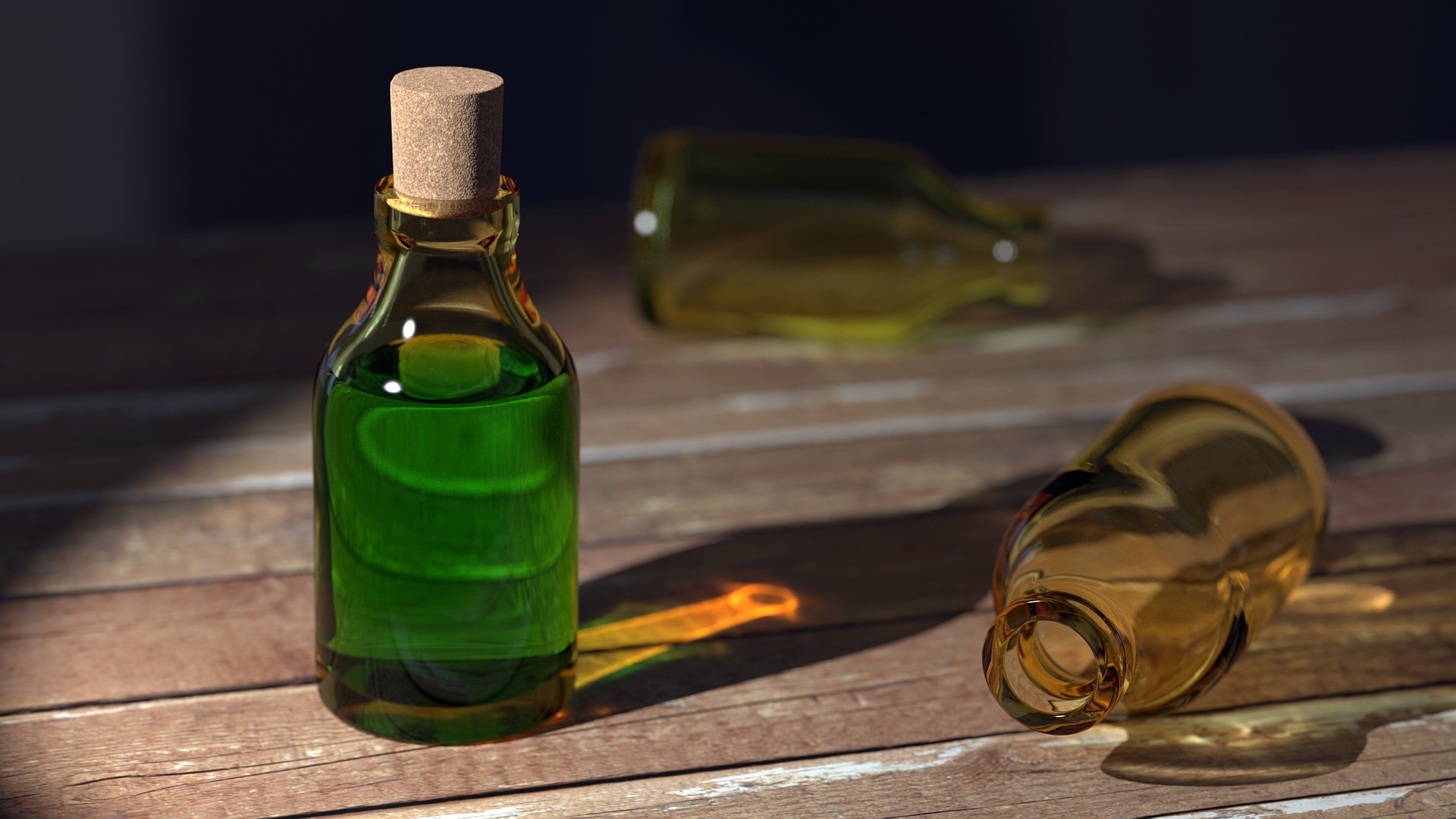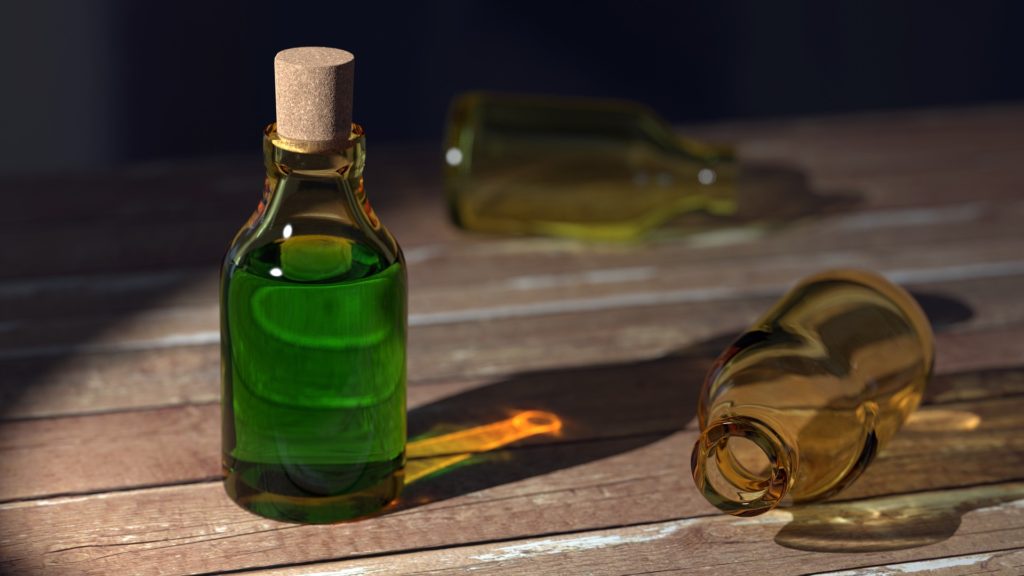Adelina Chachanidze
Ahmed Othman
Suraj Bhandari
Fiona Mwacharo
Nowadays, the popularity of plant-based materials is rapidly increasing worldwide. Have you ever wondered why it is so? Plant-based chemicals have proven to be useful in different branches of science and are used in a wide variety of products including food supplements, cosmetics, and even medicine. This article gives examples of plant-based materials in commercial health food and natural products and reveals the major chemicals or chemical groups identified in those plants.
Invigorate your body with birch leaf extract
Birch (Betula pendula roth), also known as European silver birch, is a tree known for its white bark. It is found in most areas of Europe as well as in some northern areas of Asia. There are up to 22 varieties and subspecies of this species (Vladimirov, Nikolić, Stanojević, Nikolić & Tačić 2019, 65). The leaves of birch trees have been used since ancient times to increase the amount of urine and treat urinary tract infections. The leaves contain flavonoids as its main phenolic compounds. (Vladimirov et al. 2019, 68.) Phenolic compounds are a large group of biochemicals with diverse biological functions that can be found in plants. Fruits and vegetables, rich in phenolic compounds, are associated with the prevention of several chronic diseases because of the compounds’ antioxidant properties. A wide variety of phenolic compounds includes flavonoids, phenolic acids, tannins and lignans. (Oliveira, Carvalho & Melo 2014, 765.) Flavonoids are known to have a broad spectrum of health benefits. They have antioxidant, anti-inflammatory, anti-mutagenic and anti-carcinogenic properties. Flavonoids can be further subdivided into different subgroups depending on the chemical structure. Some commonly known flavonoids are flavones, flavonols and flavanones (Panche, Diwan & Chandra 2016, 1-2).
Enhance the flavor of wine by adding tannin, which is the active ingredient in guava
Guava bark is used to enhance the taste of wine, since it includes up to 30% tannin. Many companies utilize tannin by adding an earthy flavor to red wines, which is going to improve the flavor of otherwise dull wine. It is also used with white wines that have not been exposed to oak to add astringency. A good example of this is Vineter’s Best, who is utilizing tannin in their wine production. Similarly, it is possible to find tannic acid powder for R&D use. Guava fruit contains large quantities of terpenes, caryophyllene oxide, and p-selinene which have calming effects (Mackes 1996). Terpenes is used in traditional Chinese medicine based on their enormous availability and variety. (Liu and Jiang 2012.) Terpenes pay furthermost of all secondary plant metabolites to industrial and medicinal use (Zwenger and Basu 2008). There are many commercial companies utilizing terpenes, such as DabLabz Fruit Derived Terpenes.
Active ingredients in turmeric and pomegranate as a supplement
Turmeric is a flowering plant that grows in Eastern Asia, for example in India. It is in minor use in the west but has a substantial role in the Eastern Asian cuisine. Westerners appreciate it mainly, if not just for its colour, but the aroma it gives in cooking. In its’ standard form, turmeric contains moisture, curcumin, extraneous matter, mould and volatile oils. Besides food, turmeric is also utilized in production of natural products. For example, Nature Made Turmeric Curcumin brand, where each capsule includes 450 mg of turmeric root powder and 50mg of standardized turmeric root extract.
Pomegranate tree on the other hand grows as native tree in Northern India, Iran and in Mediterranean area of Asia. The first time the scientists heard about pomegranate fruit was in Egyptian mythology and art. It was praised in the Old Testament of the Bible and in the Babylonian Talmud, where it was utilized ever since in many chains beside the food chain (Morton 1987). In modern period however, it was utilized in big proportions as a supplement due to its antioxidants and anti-inflammation properties. According to Natac science to market -website, pomegranate contains Punica granatum L.0 – 40% Punicalagins. Many companies are utilizing pomegranate in their products. For example, Bulebonnet is one of the nature-oriented company who is utilizing the active ingredients in pomegranate. In their supplement beside the whole pomegranate extraction of 800mg, it has the most active Punicalagins with 160 mg.
Healthy oil for healthy people
Common sea-buckthorn (hippophaes rhamnoides) is a thorny shrub that grows up to 7m high. It grows in Europe, Asia Minor, Central Asia, Siberia, China and Tibet. From these shrubs, small round orange or yellow berries, known as sea-buckthorn, are produced. Sea-buckthorn oil can be extracted via mechanical cold pressing of the seeds (up to 12% weight of oil) and/or the fruit pulp (8-12 % weight of oil). (Zielińska & Nowak 2017, 3.) Sea-buckthorn fruit oil contains about 190 bioactive substances which includes vitamins A, C, D, E, F, K, P and B complex. The vitamin A is in the form of carotenoids (about 200 mg/100 g) which gives the oil regenerative and anti-wrinkle properties. The vitamin C content is fifteen times higher than in an orange (about 695 mg/100 g) and has antioxidant properties. Sea-buckthorn fruit oil contains saturated fatty acids including healthy omega oils such as alpha-linolenic acid (omega-3), gamma-linolenic acid (omega-6), linolic acid (omega-6) and oleic acid (omega-9). These fatty acids are especially effective in cosmetics as they moisturise the skin, unblock skin pores and limit the number of blackheads. (Zielińska & Nowak 2017, 3-5.)
Choose beautiful, stay beautiful: Rose
Roses have always been regarded as a sign of romance, and are commonly used for their beauty in royal gardens, for example. Roses are also useful for improving our health, in addition to their attractiveness and narcotic fragrance. At the early 20th century there were only five components found to be present in the rose, namely citronellol, geraniol, nerol, linalool, and β-phenyl ethanol, which together accounted for 80 per-cent (by) weight of rose oil. β-phenyl ethanol is found in more than 80 percent of all perfumes because of its adaptability as it enhances the odors of variety of perfumes. Rose oxide, a cyclic monoterpene ether, was the first essential compound detected at a concentration of 0.5 percent. It has however unpleasant smell like the remainder of the mineral oil, but at high dilution it provides a beautiful freshness aroma and a green leaves-reminiscent scent.
More than 300 different compounds can be found in the petal of the rose (Schaefer). Citronellol, an important compound of rose, is found to contain potent aldose reductase inhibitory and antioxidant activity. The main benefit of citronellol is that it has no recorded toxicity and therefore is proven to be an effective component that can prevent the development of secondary diabetes complications. (Jagdale, Nalawade, & Kamble, 2015.) The concentration of β-Damascenone in rose oil is very small, but it contributes significantly to the aroma. It is a highly aromatic compound found in many foods including tea, honey, coffee, beer, strawberry, apple, tangerine juice, passion fruit and tomatoes. This is a primary aroma of wine. It has a complex aroma of the apple honey, tropical fruit quince. (Petrozziello & Vaudano, 2017.)
Live healthy life without coconut
Coconut water is made of 95% water, containing trace amounts of carbohydrates, proteins, oils, vitamins and minerals. Analytical studies have shown that coconut water contains nutrients such as glucose, amino acids, and electrolytes such as potassium, calcium, sodium, magnesium and many others. (Team, Composition, 2017 March.) Coconut oil contains around 85% of saturated fatty acids in the short and medium chain. For this reason, coconut oil can be assumed to have higher thermal stability. Coconut oil is widely used as a lubricant in some two-stroke engines in Southern part of India, and studies have been recorded on coconut oil tribological performance. (Jayathilaka & Seneviratne, 2016, January.) Coconut oil has shown to have antiseptic effects on the skin, and it is commonly used in the soap and other beauty care product industry. In addition, coconut oil is used as a popular ingredient in many skin care and hair care products due to its moisturizing effect and antimicrobial activity. (Jayathilaka & Seneviratne, 2016, January.) The coconut meat and oil have a higher wet basis TPC (Total polar compounds) and antioxidant activity than coconut water. (Chang & Wu, 2011.)
Bilberry and blueberry
Bilberries and blueberries are similar looking and tasting berries with even the same active chemical compound. However, there are differences between these two berries, which are important to know to avoid confusion while buying bilberry- or blueberry-based products. The main difference is that blueberries, sometimes called American blueberry, are cultivated commercially and the biggest producers are USA, Canada, Poland, Germany, and Mexico. While bilberry, also known as European blueberry or wild blueberry, is a wild plant growing in the forests. Bilberries can be found even in Finnish forests. Moreover, bilberries and blueberries have different appearance: blueberries are bigger than bilberries and have white flesh, while bilberries’ flesh is dark red. (Trello, 2020.) The main active chemical compound in both berries is anthocyanin. Anthocyanins are a subgroup of flavonoids; therefore, they are polyphenols, which give plant their color; depending on pH-levels it varies from red and purple-blue to yellow-green (Tazini 2014). Anthocyanins have a positive influence on human health: they are one of the strongest antioxidants, they support brain activity, memory and eyesight, also have capacity to lower blood pressure (Guha 2015). Bilberries and blueberries are sold in different forms in the market. It can be berries itself, sometimes deep freezed, or in capsules or powder as a food or dietary supplement and vitamins.
Understanding the importance of the chemistry behind the active ingredients
There is a great potential in varieties of plants and their extractives found all over the world. These extractives are affected by the ways and methods of extraction, location, topography and the way of plantation. These plants extractives are used in a wide variety for scientific research and business opportunities. This article discusses about the most active and important compounds of plants and their use in the different products. Though the discovery of compounds of plants and its extraction is a long process, it has a tremendous advantage in various sectors, like
pharmaceutical, food, industrial and many others. In fact, the diverse structures and different abilities of extracts provides multitude of effects, and more research on this field might lead to the betterment of the humankind.
References:
A, K., Hassan, A. & Elagib, R. (2018). Content of phenolic compounds and vitamin C and antioxidant activity in wasted parts of Sudanese citrus fruits. Food Science and Nutration, 6(5), 1214-1218.
Jagdale, A., Nalawade, M., & Kamble, S. (2015). Citronellol: A Potential Antioxidant and Aldose Reductase Inhibitor From. International Journal of Pharmacy and Pharmaceutical Sciences, 7, 208.
Liu, Q. M., & Jiang, J. G. (2012). Antioxidative activities of medicinal plants from TCM. Mini reviews in medicinal chemistry, 12(11), 1154-1172.
Meckes, M., Calzada, F., Tortoriello, J., Gonzalez, J. L., & Martinez, M. (1996). Terpenoids isolated from Psidium guajava hexane extract with depressant activity on central nervous system. Phytotherapy Research, 10(7), 600-603.
Morton, J. F. (1987). Fruits of warm climates. JF Morton. N.A. (N.D.). Natarc science to market, product other extracts. Link https://natacgroup.com/en/products/other-extracts/
Ogunwande, I. A., Olawore, N. O., Adeleke, K. A., Ekundayo, O., & Koenig, W. A. (2003). Chemical composition of the leaf volatile oil of Psidium guajava L. growing in Nigeria. Flavour and Fragrance Journal, 18(2), 136-138.
Oliveira, L. L., Carvalho, M. V, & Melo, L. 2014. Health promoting and sensory properties of phenolic compounds in food. Revista Ceres 61, 764-779.
Panche, A., Diwan, A., & Chandra, S. (2016). Flavonoids: An overview. Journal of Nutritional Science, 5 E47, 1-15.
Petrozziello, M., & Vaudano, E. (2017, July). b-damascenone from musts to wines with reference to grape maturity. 1. doi:DOI: 10.13140/RG.2.2.26202.24008
Schaefer, B. (2014). Natural products in the Chemical Industry. https://doi.org/10.1007/978-3-642-54461-3
Sobel, A. (2019). Limonene. Retrieved from https://www.healthline.com/nutrition/d-limonene#whatit-is Last visit: 02.06.2020
Jayathilaka, N., & Seneviratne, K. (2016, January). Coconut oil: Chemistry and Nutrition. Retrieved May 22 2020
Chang , C.-L., & Wu, R.-T. (2011, May 15). Quantification of (+)-catechin and (−)-epicatechin in coconut water by LC–MS. Food Chemistry, 26(2), 710-717. doi:https://doi.org/10.1016/j.foodchem. 2010.11.034
Marina, A., Man, C. Y., & Amin, I. (2009, October). Virgin coconut oil: emerging functional food oil. Trends in Food Science and Technology, 20(10), 481-487. doi:https://doi.org/10.1016/j.tifs.2009.06.003
Seneviratne , K. N., Hapuarachchl, C. D., & Ekanayake, S. (2009, June 15). Comparison of the phenolic-dependent antioxidant properties of coconut oil extracted under cold and hot conditions. Food Chemistry, 114(4), 1444-14449. doi:https://doi.org/10.1016/j.foodchem.2008.11.038
Team, F. (2017 March ). Composition. In Coconut handbook.
Team, F. (2017 March 31). The Chemistry Of Coconut Water. In Coconut Handbook.
Tavares, D. C., & Santos, R. (2018). Geraniol and linalool anticandidal activity, genotoxic potential and embryotoxic effect on zebrafish. doi:DOI: 10.2217/fmb-2018-0200
Vladimirov, M. S., Nikolić, V. D., Stanojević, L. P., Nikolić, L. B & Tačić, A. D. 2019. Common Birch (Betula Pendula Roth.) – Chemical Composition and Biological Activity of Isolates. Advanced Technologies 8(1), 65-67
Zielińska, A., Nowak, I. 2017. Abundance of active ingredients in sea-buckthorn oil. Lipids Health Dis 16(1), 95.
Zwenger, S., & Basu, C. (2008). Plant terpenoids: applications and future potentials. Biotechnology and Molecular Biology Reviews, 3(1), 1. 8
Tello, C., (2020). Bilberry vs. Blueberry: What Is the Difference?
Available: https://selfhacked.com/blog/bilberry-vs-blueberry/ Last visit: 06.06.2020
Tazini, N., (2014). ANTHOCYANINS: DEFINITION, STRUCTURE AND PH
Available: https://www.tuscany-diet.net/2014/02/22/anthocyanins-definition-structure-ph/ Last visit: 06.06.2020
Guha, S. (2015). Health benefits of anthocyanins
The authors of this article are students of chemistry at Centria University of Applied Sciences:
Adelina Chachanidze
Ahmed Othman
Suraj Bhandari
Fiona Mwacharo



